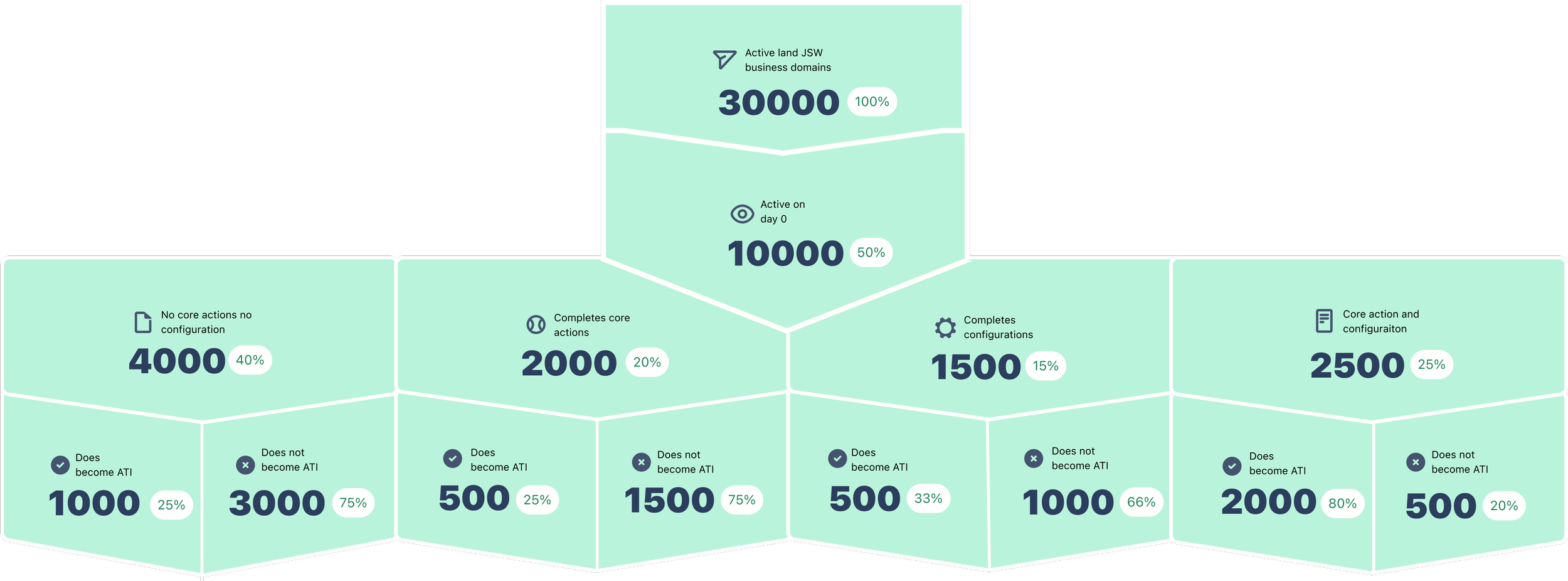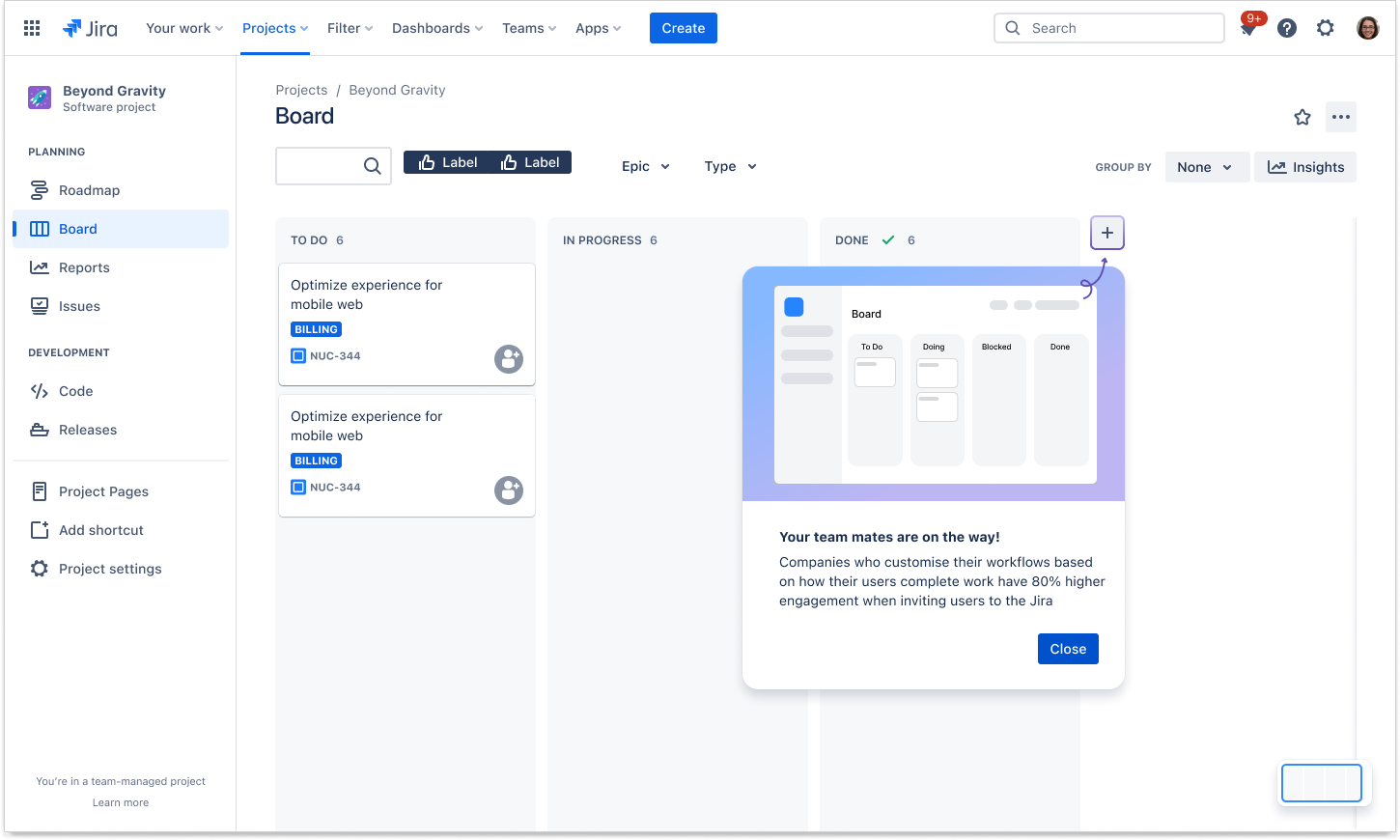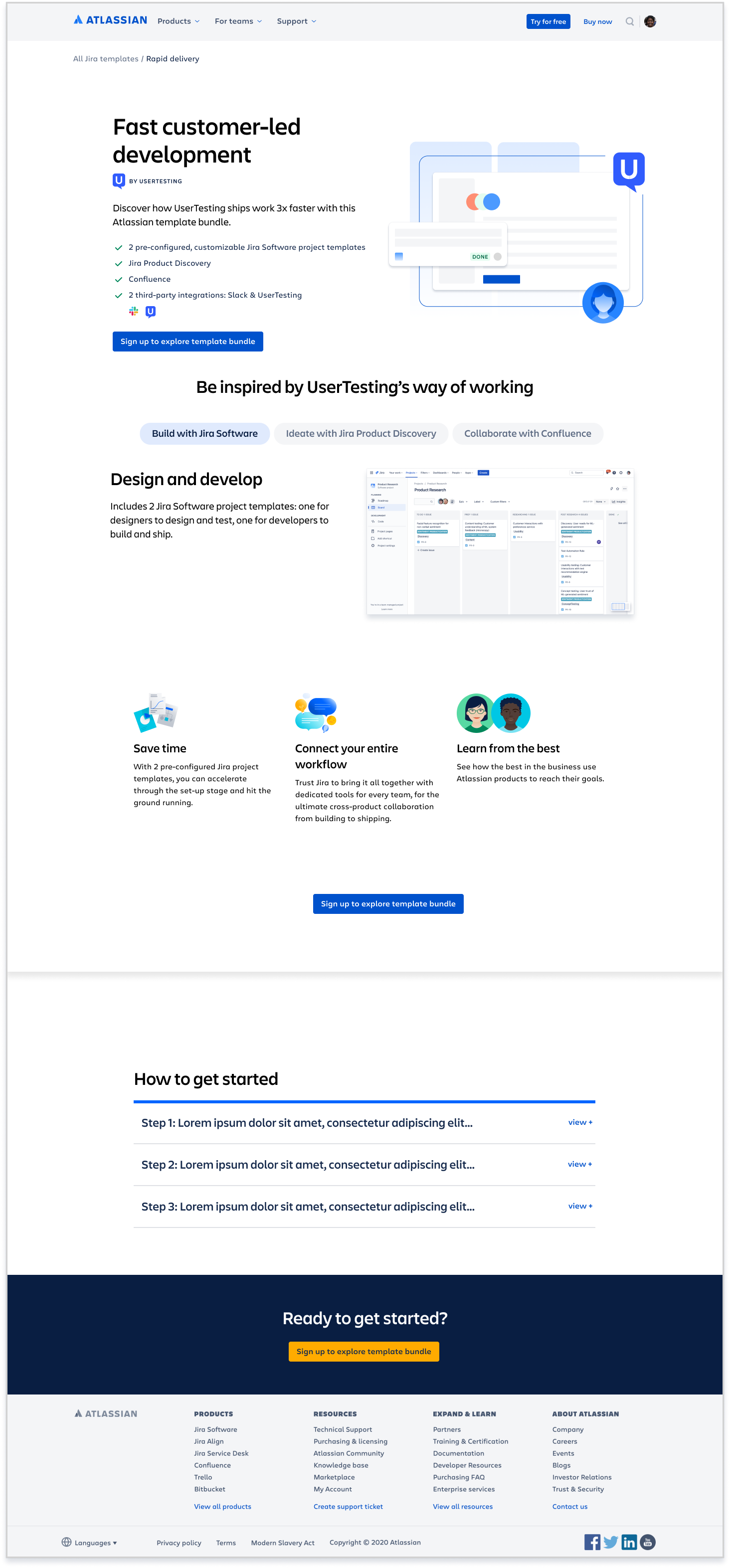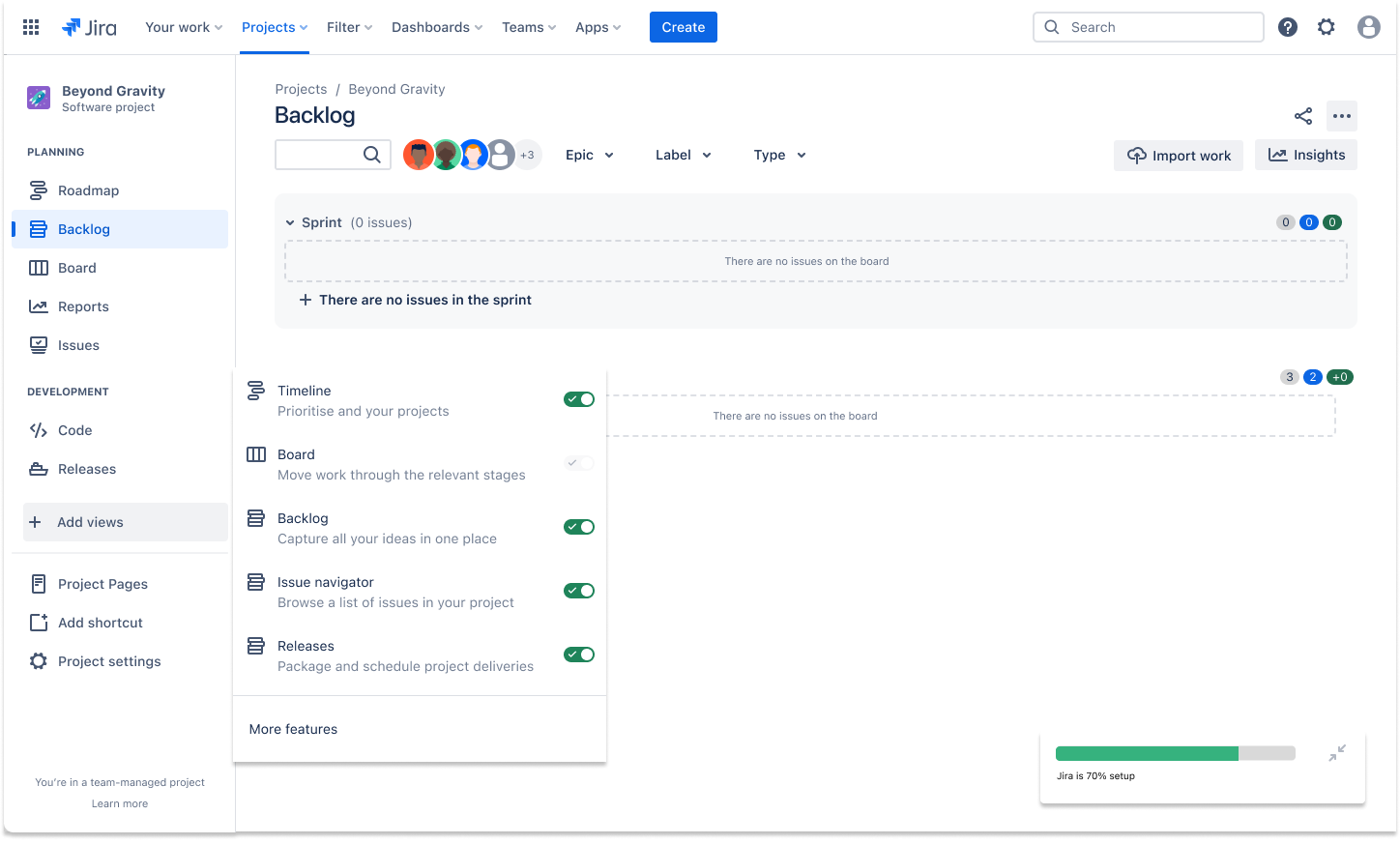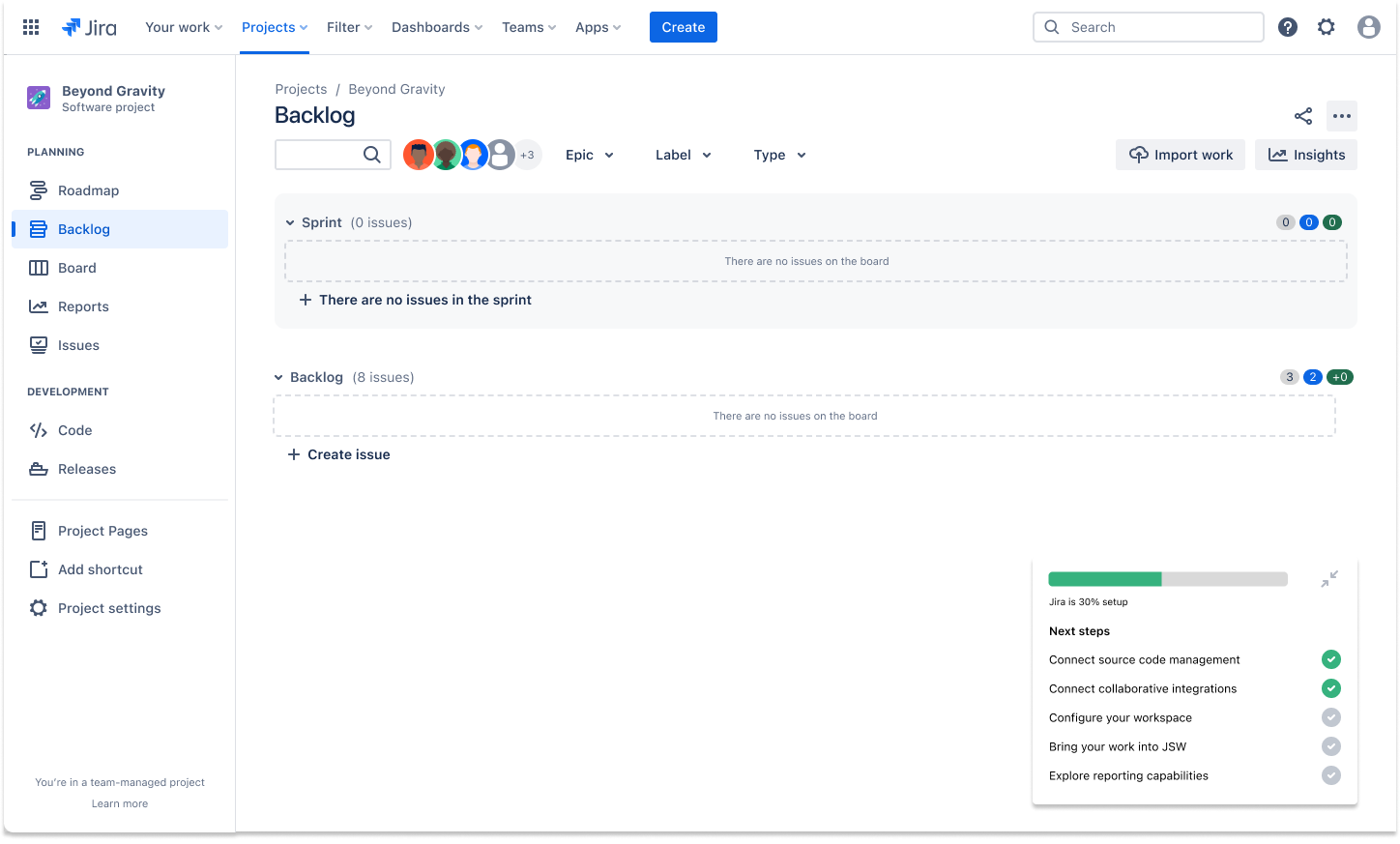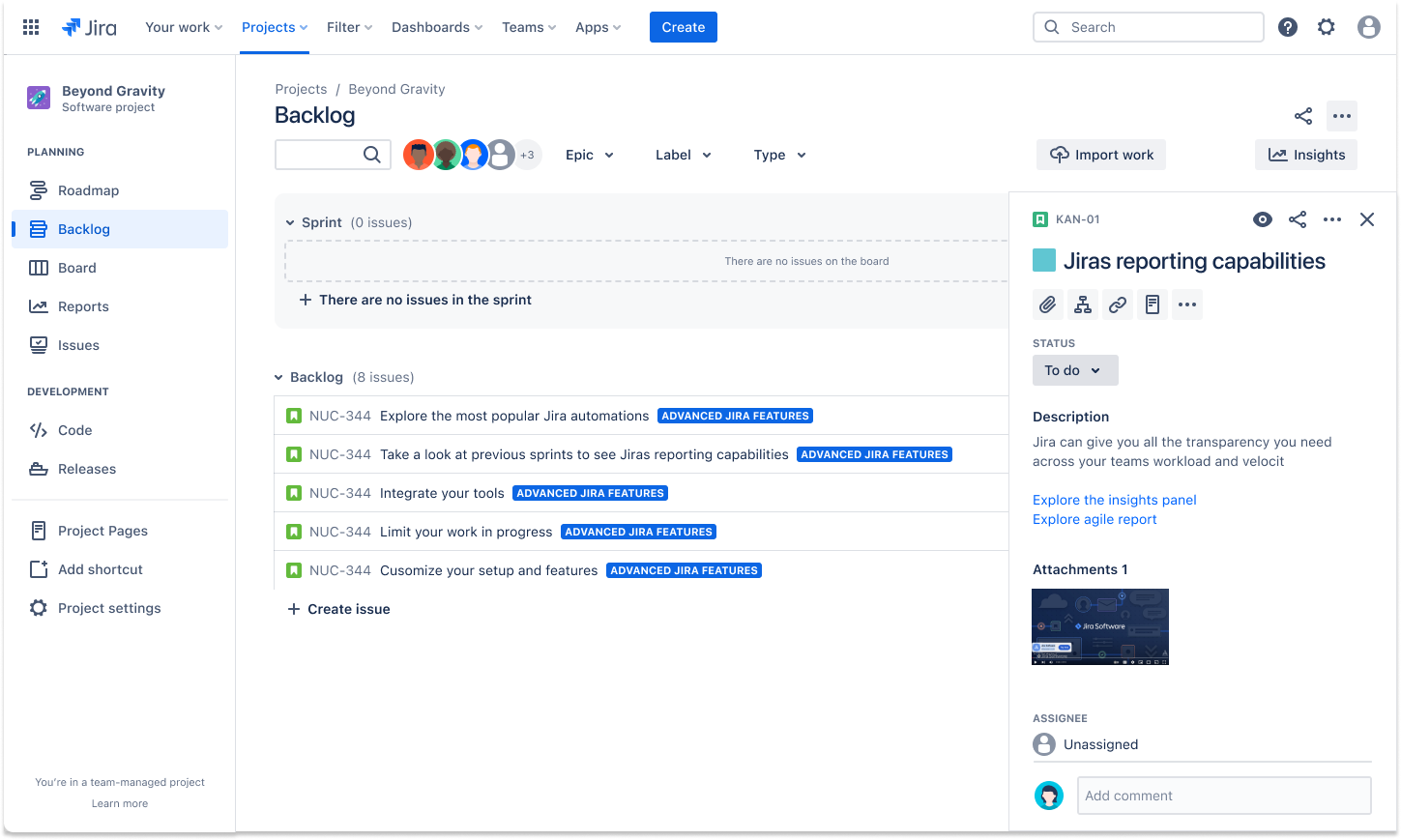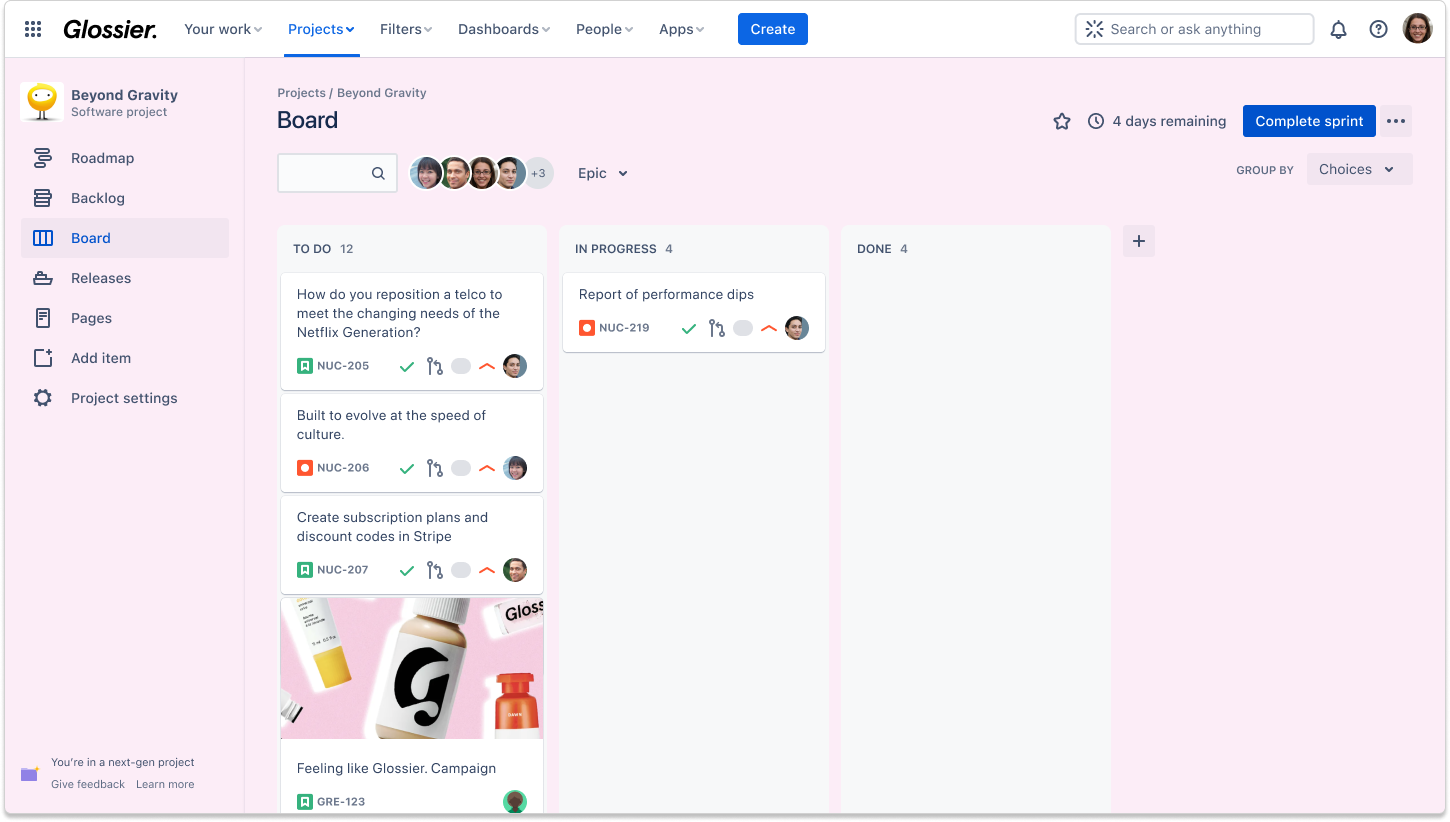Jira onboarding
Over three quarters I used growth experiments to take Jira from a product with a one-size-fits-all approach to a product that understands a user’s actions and anticipates their needs while onboarding.
Understanding the data
We started by working with the data science teams to understand the current state of the platform and funnels we would be trying to manipulate. Having clear metrics on how users moved through the product and the results of their actions set us up to understand the levers we could pull to drive users to find value in the product.
On one hand, we would be trying to encourage more users to configure their product or take core actions which the data showed raised the likelihood of them becoming paid users.
On the other hand, we would be trying to influence how many users were invited to our product and successfully enetered.
Contextual nudges
Our qualitative research informed us that due to the complexity of Atlassian products, users were looking for best practices. The problem with our current onboarding was it lacked any context to the user’s current situation and was not personalized to their experience.
We designed contextual nudges that would take a user’s action and recommend the best next configuration in the product.
We ran multiple contextual nudges and measured the results against the control. This let us ensure that we were moving our success metrics and learning from the experiments that worked.
When looked at together the overarching nudges drove configuration and core actions in the product, but the contextual nature of them meant users could explore these in any order based on their interests.
This meant users could explore the product based on what they found valuable and still be guided on how to best utlise those areas for their specific use case..
Personalisation based on skill level
Our qualitative research also told us while a great deal of users wanted to click around and explore beginner users would prefer to be fully guided through setup.
For our beginner audience, we utilized wizards explaining complex concepts to them step by step as they created their instance.
Personalisation and best practices in templates.
Along with users being encouraged to take best practices in product we experimented with creating Atlassian product setups tailored towards specific groups and industries. This would mean users could land in a product that was already catering to their unique needs.
Based on our qualitative research we knew two things:
Atlassian products can be configured in an endless range of ways.
Users are looking to learn best practices from companies they feel are knowledgeable in the area.
For this reason, we created the customer showcase, where users could explore popular Jira setups based on different industries and company sizes.
AI to drive core actions
We user-tested and experimented with the use of AI to automate the creation of Jira issues.
Dummy data and gamification
We also experimented with different modes of teaching users how to best configure our products. We explored gamification of personalized onboarding journeys as well as using dummy data to explain the product and teach best practices.
Personalisation and delight
We also explored personalization focusing on features that would delight users. Our goal was to encourage them to see Jira as something they owned encouraging them to use their own brand logos. Our hypothesis was this would drive more activation in invited users as they saw the product as in house rather than external.
